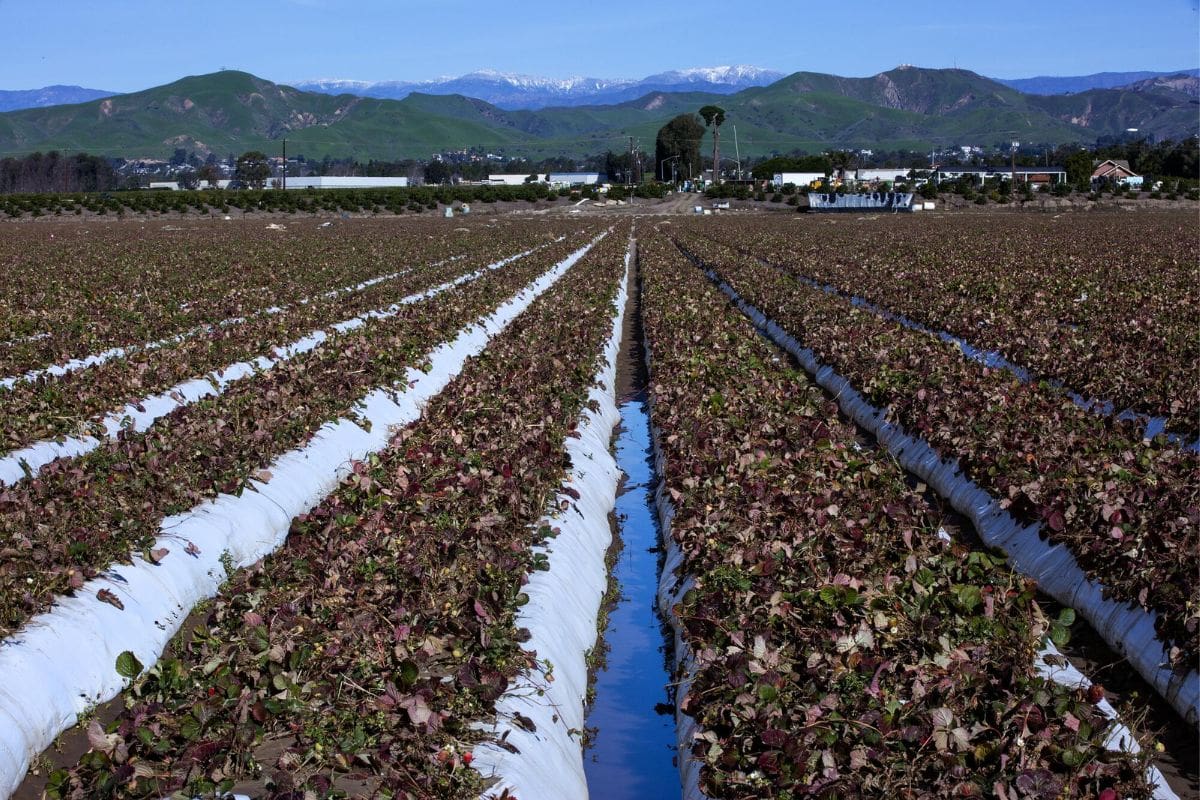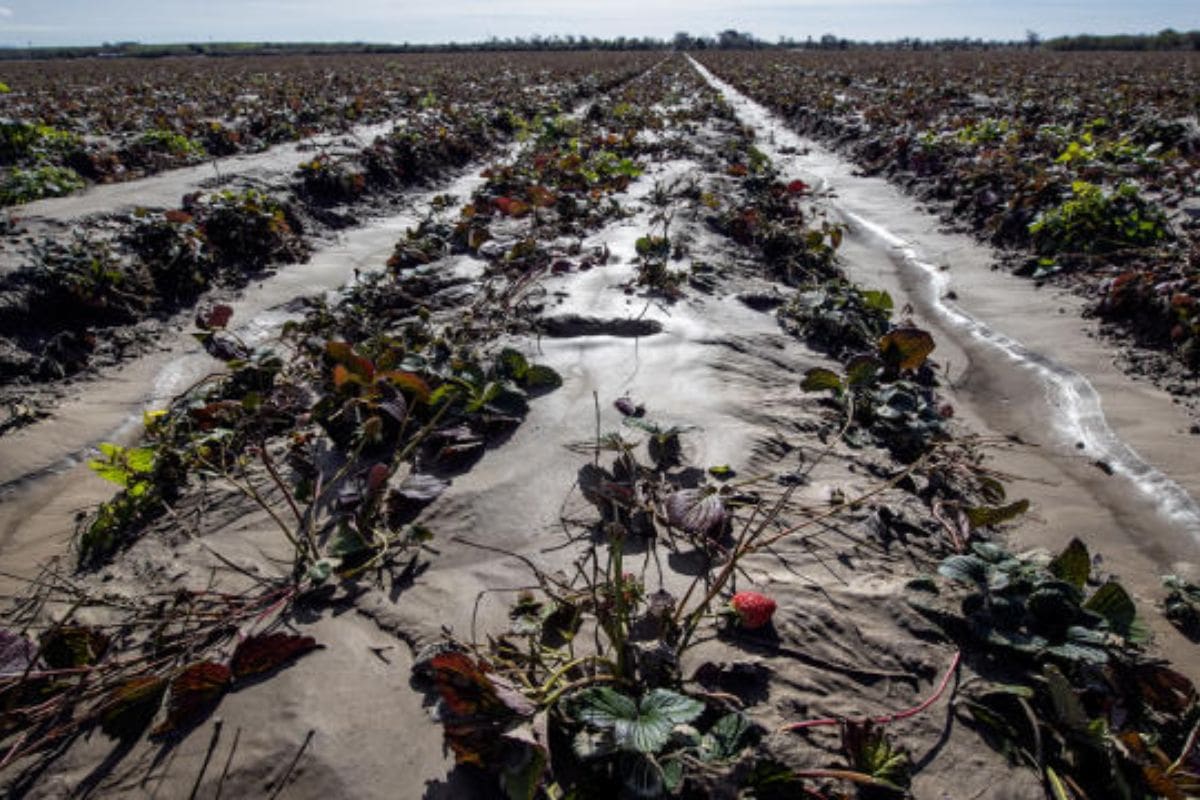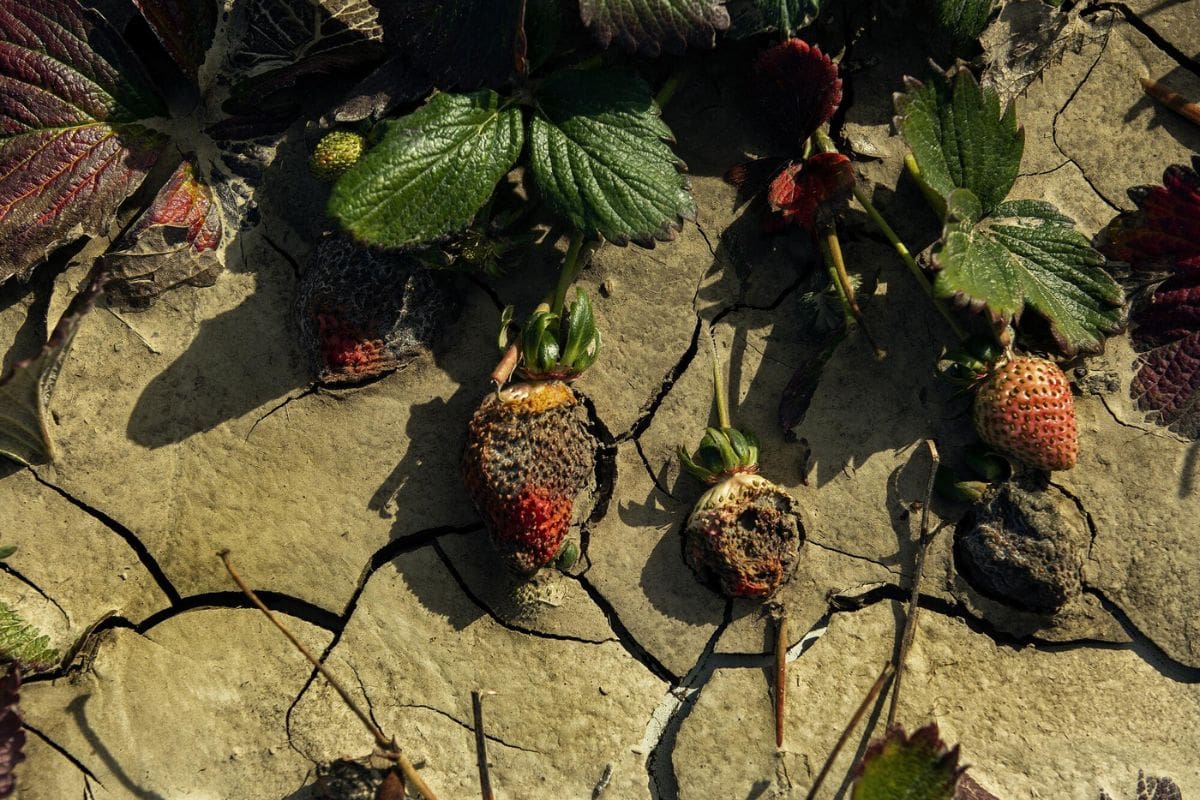California Strawberry Crisis: The recent deluge in California has not only drenched the land but also cast a shadow over the strawberry fields, a vital sector that sustains many communities.
As the rains continue to ravage the crops, farmers are grappling with significant losses, and the repercussions are felt beyond the fields. The displacement of workers adds another layer of complexity to an already dire situation.
This unfolding crisis raises crucial questions about the future of agriculture in the region and the well-being of those who depend on it.

Agricultural Crisis Unfolds in California Amid Unprecedented Rains
Amidst the relentless deluge of unprecedented rains, California’s agricultural sector is grappling with a crisis of monumental proportions, as heavy snowfall and downpours have inflicted widespread devastation across key regions, particularly in the Central Valley. The heavy precipitation, which began in December, has created a dire situation in the heart of California’s agricultural hub. With vast croplands, exceeding 100,000 acres, now submerged underwater, the future of agriculture in the region is uncertain.
The impact of the heavy rainfall extends beyond mere waterlogging; it also brings the threat of soil erosion, loss of nutrients, and potential damage to infrastructure like irrigation systems and farm equipment. Farmers in the region are facing significant challenges as they struggle to salvage what remains of their crops and prevent further destruction.
The agricultural crisis unfolding in California is not just a local issue but has broader implications for the state’s economy and the nation’s food supply chain. As the situation worsens, swift and effective interventions will be crucial to mitigate the long-term effects of this natural disaster.
Impact on Strawberry Fields and Economic Challenges Emerge
The inundation caused by the ongoing heavy rainfall in California has significantly impacted strawberry fields, leading to emerging economic challenges within the agricultural sector. The repercussions of the flooding are far-reaching, affecting not only the crops but also the livelihoods of farmers and farmworkers. Here are some key points to consider:
- Crop Damage: The heavy rains have caused extensive damage to strawberry fields, jeopardizing the harvest and resulting in potential financial losses for farmers.
- Investment Loss: Farmers had heavily invested in preparing their fields for the upcoming harvest before the unexpected deluge, amplifying the economic impact of the damage.
- Displacement of Farmworkers: The flooding has led to the displacement of thousands of farmworkers, many of whom are Latino residents in communities like Pajaro. Their homes have been destroyed by the floods, adding to the humanitarian crisis.
- Economic Strain: The economic challenges extend beyond crop damage, with the agricultural sector facing uncertainty and financial strain due to the ongoing crisis.

Concerns Mount for Future Crop Sustainability and Community Impact
With the ongoing flooding in California significantly impacting strawberry fields and causing economic challenges within the agricultural sector, there is a growing concern for the future sustainability of crops and the community’s well-being.
The current situation has raised alarms about the ability of strawberry fields and other crops to recover once the waters recede. Tricia Stever Blattler, Executive Director of the Tulare County Farm Bureau, has highlighted the catastrophic nature of the situation in the Central Valley, where approximately one-fifth of strawberry farms near Pajaro have been flooded. This has intensified worries about the long-term viability of these fields and the potential ripple effects on the agricultural industry.
Moreover, the displacement of farmworkers due to the flooding adds a human dimension to the crisis, emphasizing the broader community impact of the ongoing challenges faced by the agricultural sector in California.
As the floodwaters persist, the concerns for future crop sustainability and the well-being of the affected communities continue to mount.

Also Read: Mastering the California Superbike School Experience in 2024
News In Brief
California’s Strawberry Crisis Escalates: Relentless Rains Threaten Crops and Communities. The ongoing deluge, devastating strawberry fields, raises concerns for crop sustainability and community well-being. Farmers grapple with losses, and the displacement of workers adds complexity to the dire situation. As heavy rainfall wreaks havoc, the region’s agricultural future hangs in uncertainty, impacting the state’s economy and the national food supply chain. Swift interventions are crucial to mitigate the long-term effects. #CaliforniaCrisis #AgriculturalImpact
Our Reader’s Queries
What crops are affected by flooding in California?
Across the state, head lettuce incurred damages totaling $67 million, while broccoli and cauliflower each suffered losses amounting to $65 million. Almonds and strawberries also faced significant impacts, with damages reaching $33 million and $29 million, respectively.
How can we protect crops from floods?
Various mechanisms can contribute to addressing this issue. Dikes and soil bunds serve as protective barriers against unforeseen floods, providing farmers with the flexibility to either drain or retain water as required. Drainage ditches prove effective in diverting surplus floodwaters. Additionally, implementing reuse agreements empowers farmers to alternate in utilizing water resources from the.

